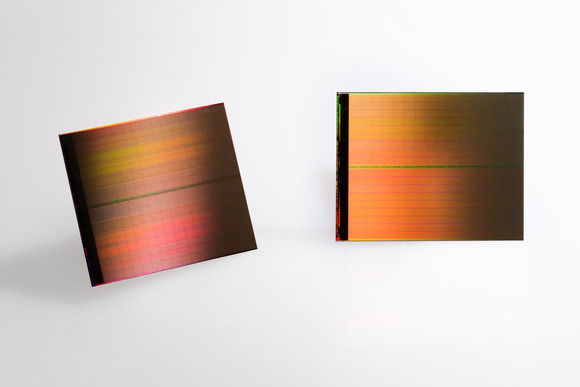- Intel and Micron begin production on new class of non-volatile memory,creating the first new memory category in more than 25 years.
- New3D XPoint™ technology brings non-volatile memory speeds up to 1,000 times faster[1]than NAND, themost popular non-volatile memory in the marketplace today.
- The companies invented unique material compounds and a cross point architecture for a memory technology thatis 10 times denserthanconventional memory[2].
- New technology makes new innovations possible in applications ranging from machine learning to real-time tracking of diseases and immersive 8K gaming.
ISLAMABAD ( BMZ REPORT )
Intel Corporation and Micron Technology, Inc. today unveiled 3D XPoint™ technology, a non-volatile memory that has the potential to revolutionize any device, application or service that benefits from fast access to large sets of data. Now in production,3D XPoint technology is a major breakthrough in memory process technology and the first new memory category since the introduction of NAND flash in 1989.
The explosion of connected devices and digital services is generating massive amounts of new data. To make this data useful, it must be stored and analyzed very quickly, creating challenges for service providers and system builders who must balance cost, power and performance trade-offs when they design memory and storage solutions. 3D XPoint technology combines the performance, density, power, non-volatility and cost advantages of all available memory technologies on the market today. The technology is up to 1,000 times faster andhas up to 1,000 times greater endurance[3] than NAND, and is 10 times denser than conventional memory.
“For decades, the industry has searched for ways to reduce the lag time between the processor and data to allow much faster analysis,” said Rob Crooke, senior vice president and general manager of Intel’s Non-Volatile Memory Solutions Group. “This new class of non-volatile memory achieves this goal and brings game-changing performance to memory and storage solutions.”
“One of the most significant hurdles in modern computing is the time it takes the processor to reach data on long-term storage,” said Mark Adams, president of Micron. “This new class of non-volatile memory is a revolutionary technology that allows for quick access to enormous data sets and enables entirely new applications.”
As the digital world quickly grows – from 4.4 zettabytes of digital data created in 2013 to an expected 44 zettabytes by 2020[4]–3D XPoint technology can turn this immense amount of data into valuable information in nanoseconds. For example, retailers may use 3D XPoint technologyto more quickly identify fraud detection patterns in financial transactions; healthcare researchers could process and analyze larger data sets in realtime, accelerating complex tasks such as genetic analysis and disease tracking.
The performance benefits of 3D XPoint technology could also enhance the PC experience, allowing consumers to enjoy faster interactive social media and collaboration as well as more immersive gaming experiences. The non-volatile nature of the technology also makes it a great choice for a variety of low-latency storage applications since data is not erased when the device is powered off.
New Recipe, Architecture for Breakthrough Memory Technology
Following more than a decade of research and development, 3D XPoint technology was built from the ground up to address the need for non-volatile, high-performance, high-endurance and high-capacity storage and memory at an affordable cost. It ushers in a new class of non-volatile memory that significantly reduces latencies, allowing much more data to be stored close to the processor and accessed at speeds previously impossible for non-volatile storage.
Theinnovative, transistor-less crosspoint architecturecreates a three-dimensional checkerboard where memory cells sit at the intersection of word lines and bit lines, allowing the cells to be addressed individually. As a result, data can be written and read in small sizes, leading to faster and more efficient read/write processes.
More details about 3D XPoint technology include:
- Cross Point Array Structure – Perpendicular conductors connect 128 billion densely packed memory cells. Each memory cell stores a single bit of data. This compact structure results in high performance and high-density bits.
- Stackable – In addition to the tight cross point array structure, memory cells are stacked in multiple layers. The initial technology stores 128Gbper die across two memory layers. Future generations of this technology can increase the number of memory layers, in addition to traditional lithographic pitch scaling, further improving system capacities.
- Selector – Memory cells are accessed and written or read by varying the amount of voltage sent to each selector. This eliminates the need for transistors, increasing capacity while reducing cost.
- Fast Switching Cell – With a small cell size, fast switching selector, low-latency cross point array and fast write algorithm, the cell is able to switch states faster than any existing non-volatile memory technology today.
3D XPoint technology will samplelater this year with select customers, and Intel and Micron are developing individual products based on the technology.

